Divine melodies, sacred energies, camel cart rides, rose fragrances, starry ruins — the twin towns of Pushkar and Ajmer in colourful Rajasthan offer a combination of the sacred and the spirited
1. Bow to the Creator

Sand dunes stretch into the infinite sky as the sun lowers into the Aravalli ranges. The camel cart sways through the narrow alleys. The decked up colourful camel cart with its little tinkling bells, lights up the little, sleepy town of Pushkar.
I wonder if I will reach the temple of Brahma before it closes for the evening. Built in the 14th century CE, it is cited as the only temple dedicated to the creator. According to Hinduism, the three gods—Brahma-Vishnu-Shiva—control the functions of creation, preservation and destruction respectively. But folk tales say the creator has a series of curses and prayers to him do not bring respite from the sufferings on Earth.
Digging into the legend of curses, a story goes that once Vishnu and Brahma were arguing about who was the more important one among them. They approached Shiva who said that the one who could view the top of Shiva’s head would be the more important one. Shiva assumed a huge form stretching across the universe. Both Vishnu and Brahma tried to find the head, but in vain. Suddenly Brahma noticed a thazampu or ketaki flower (Fragrant Screw Pine) floating in the waters. The flower told him that she fell from Shiva’s head 1,000 years ago. Brahma requested the flower to lie, saying that he had seen the top of Shiva’s head. And an angry Shiva cursed Brahma that he would never be worshipped on Earth. The ketaki flower was also cursed and is not used in holy rituals.
As per the Saraswati Purana, Brahma created his beautiful daughter Saraswati, the goddess of learning. Enamoured by her beauty, Brahma married her, thus committing incest. The result: Vishnu cursed Brahma that he would not be worshipped anywhere except in Pushkar.
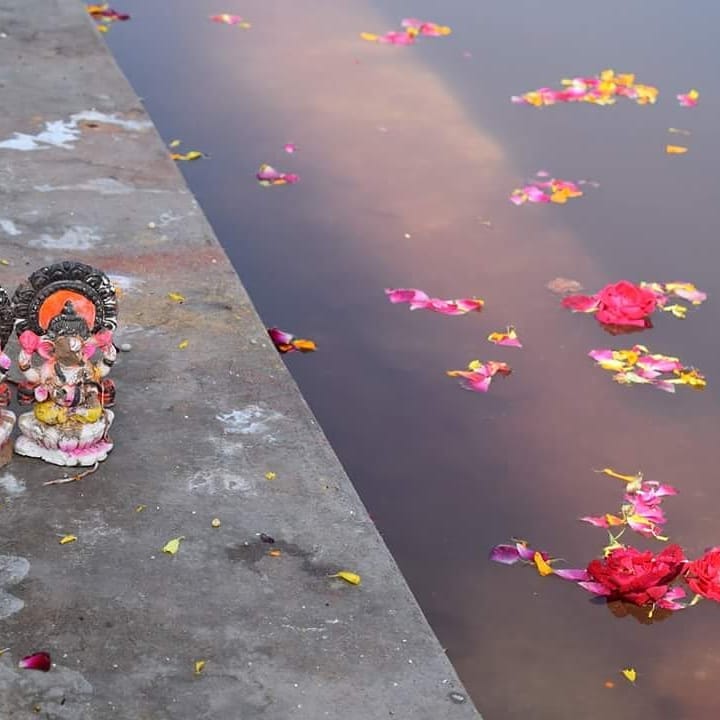
Suddenly, the cart halts and Pushkar’s colours fill up the surroundings. Rows of shops and vendors selling prasad, sindoor and coconut, line the street leading to the temple. A plate of pooja articles in one hand, shoes left with the shopkeeper, I am nervous to meet the creator.
About 15 minutes in the queue, and I catch a sight of the god with four heads. The four heads depict the four Vedas. Brahma does not have any weapons, but a string of prayer beads called the akshamālā. The sound of Gayatri mantra fills the air as I climb down a few steps deep into the Earth to see a shivalinga.
2. Aromas in the Open-Air Market
Out in the open, the aroma of kachoris fills the air. Pulled by the fragrance of malpuas and halwa, I stand outside a sweet shop, contemplating about giving in to the calorie-laden temptation. Nearby was a shop selling gol gappas with five different kinds of water. Rose lassi in a kulhad was also not far away.
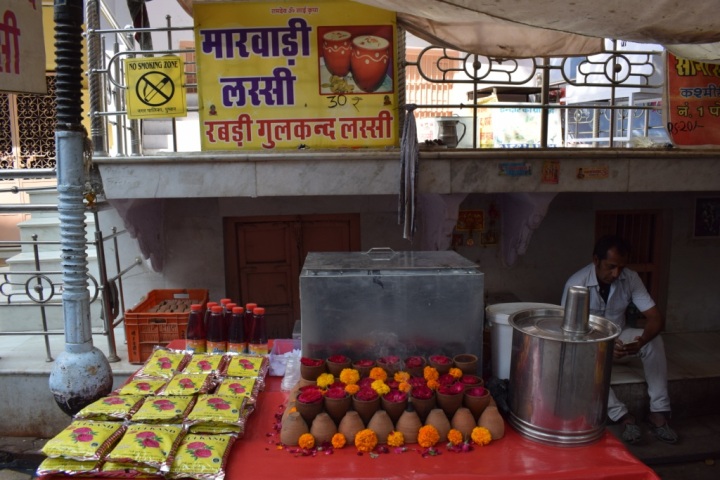
Tables lined with gulkand, rose sherbets and attar or handcrafted perfume attract buyers. I enter a shop, pulled by the fragrance of rose. The shopkeeper tells me that rose is cultivated in the area, so sherbets and gulkand are as fresh as they can be. The attar bottle costs only INR 150. There are quite a few units making these and camel leather products in the neighbouring areas.
The market has some great pizzerias, juice shops, cotton clothes and cheap camel leather stuff. Stalls are also selling falafel rolls. The more frequent visitors being Israelis, there are signs in Hebrew all around. I did sight a mosque and a gurudwara too but did not venture in. There are small guesthouses and homestays also in this area.
3. The Camel Fair

Pushkar is famous for the camel fair. Camels and other livestock are traded, competitions held and the children enjoy the rustic giant wheel and other swings. For days, the sellers stay in a camp and the area is a grand party till kartik purnima (sometime in November last week annually). There are blankets and decorations on sale for the tall creatures. Villagers from the interiors of the desert state come to sell rustic weapons, more like artefacts and handicrafts. Mostly Indians buy weapons, a shopkeeper says, as one can’t take them out of the country.
4. The Parikrama or Circumambulation

Past the colours of the market and makeshift stalls, I walk to the holy pond where a dip purifies one of all the sins. I don’t dare to take the dip seeing the dark waters but the authorities do clean this pond once a year before the fair, I am told. The entire pond is surrounded by ghats or bathing areas, some named after the patrons who funded the construction of that spot, others on nature. A parikrama of this lake is said to please the pantheon of gods, who assemble on kartik purnima here. A walk around this pond on the full moon night is a pleasure.
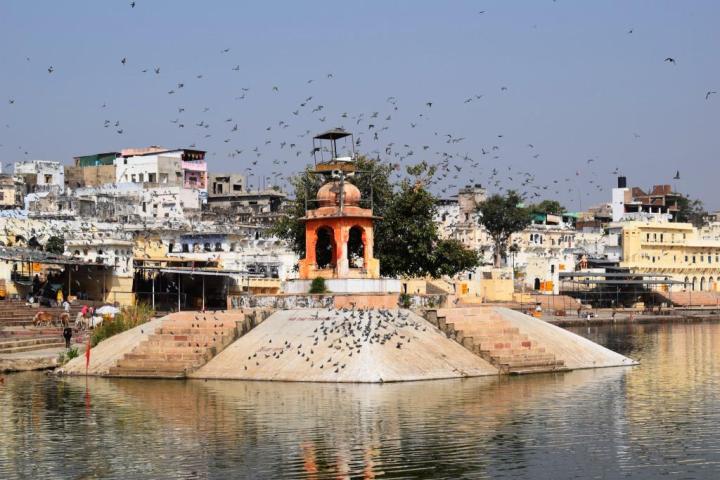
There is a Shiva temple in the middle of the lake. Offering my share of roses to the god, I sit down. I watch the priests offer prayers on behalf of those who need to send their wishes to the creator. Some seek salvation for their ancestors; others need blessings for a good life, and yet more come to find themselves. Some bathe in the holy waters, washing away their sins. Pigeons, cows, dogs, cats — all are busy searching for food. But I gaze at the sky breaking into multiple shades of orange and red. It is evening, time for lighting the lamps and hearing the sound of chants. The little lamps around the circular pond look like stars at the edge of the water. The evening is alive with shades that seep into my soul.
Rituals done, a pundit regales us with more legends. Pushkar is one the five sacred pilgrimages for the Hindus and one of the world’s oldest existing cities. The lake is formed by Shiva’s tears. Legend goes that two tears fell from Shiva’s eyes after the death of his wife Sati. From those, emerged two holy ponds–one at Pushkar and the other at Ketaksha which means raining eyes in Sanskrit.
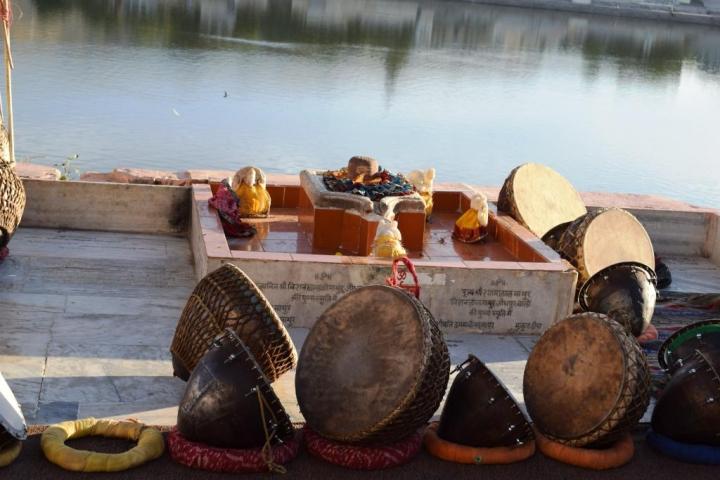
In Sanskrit, Pushkar means blue lotus. The gods released a swan with a lotus in its beak and let it fall on earth where Brahma would perform a grand yagya. (Yagyas are sacred fire offerings performed for seeking blessings before embarking on an important project/goal such as marriage, new business, and welfare of the community.) Brahma came to know that a demon, Vajranash, was killing people here. He intoned a mantra on a lotus flower to kill the demon. The parts of flower fell on three places, later known as Jyaistha, Madhya and Kanistha Pushkar. After this, Brahma performed a mahayagna to protect the place from demons. Saraswati was needed to offer ahuti but could not be found. So Gayatri, a Gurjar girl, was married to Brahma and performed the yagya. (Gurjars are the community of cowherds.) A furious Saraswati cursed Brahma to be worshipped only in Pushkar. And priests taking care of the Brahma temple are from the Gurjar community.
5. Meeting Brahma’s Wives
Pushkar houses temples dedicated to Savitri or Saraswati and Gayatri. Gayatri rests in a temple where the parikrama of Pushkar pond begins.
Savitri resides on top of Ratnagiri hill and the sunset here is spectacular, offering a fantastic view of the town. We take the cable car up but one can choose to climb the 1,000 winding steps cut into the hill too. Taking the ropeway to this adds to spiritual experience. After all, the spirit does like to rise! I wasn’t fit enough to climb the 1,000 steps.
6. Kalbeliya Folk Dance at Sunset Point
The dunes come alive as the twilight sets in. Camel carts with Ola stickers all around, stalls selling drinks and snacks and traditional Kalbeliya dancers, the dunes have their own shades. Kalbeliyas were snake charmers once upon a time, so there is a distinct slithering movement in their performance. (Ola no longer offers camel cart services, just the stickers live on.)
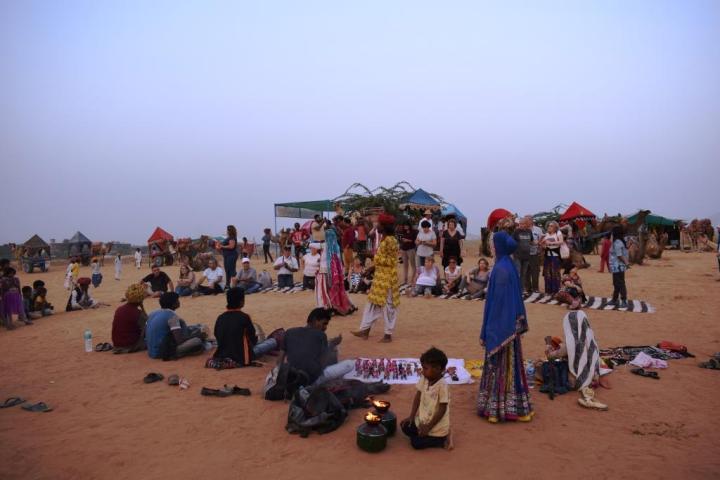
Only male camels are allowed to reside in the area, as they go beserk around their female counterparts. The mating season is the time to watch out, our camel cart driver explains. The dunes weave a magic, more so for a young couple who seemed to be busy with a pre-wedding shoot, or so it looked like to us. With reluctance, we sway our way back to the resort as darkness engulfs the sacred town.
As the sky turns dark, the little ripples in the pond shine with the city’s lights. The little town looks charming; shopkeepers are closing their shutters. We just watch the dim lights as we need to go to Ajmer to catch the train back to Delhi.
7. Saints of Ajmer
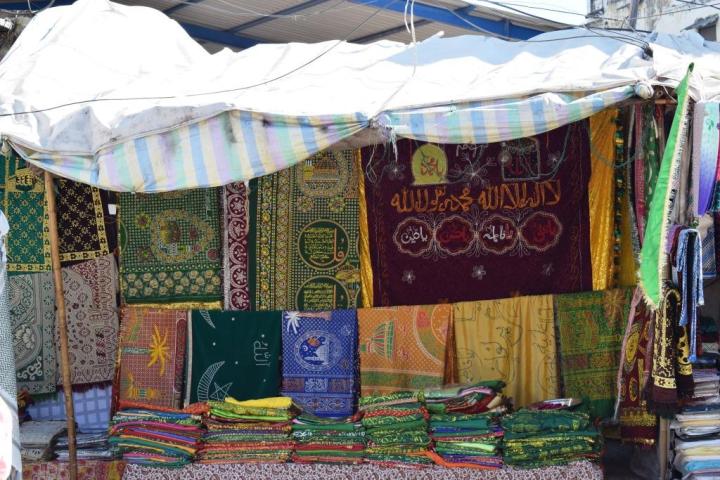
After meeting Brahma, it was time to meet the saints in Ajmer. The road to Ajmer Sharif Dargah of Sufi saint Moinuddin Chishti is constantly packed. The 13th-century Sufi saint and philosopher, born in Sanjar (Iran), arrived in Delhi during the reign of the Sultan Iltutmish (d. 1236). Influenced by the writings of the famous Sunni Hanbali scholar and mystic Abdallāh Anṣārī (d. 1088), he moved from Delhi to Ajmer. And soon came to be known as a compassionate spiritual preacher, with people regaling tales of miraculous healing powers. Even Mughal emperor Akbar visited the tomb of Khwajah Mu’in ad-Din Chishti at least 14 times. He reconstructed the tomb’s sanctum sanctorum in 1579. Among the most holy sites in India, the saint’s life is celebrated the year through as people come from all corners of the world seeking blessings. On his death anniversary, ʿUrs Sharif’ celebration is a huge draw.
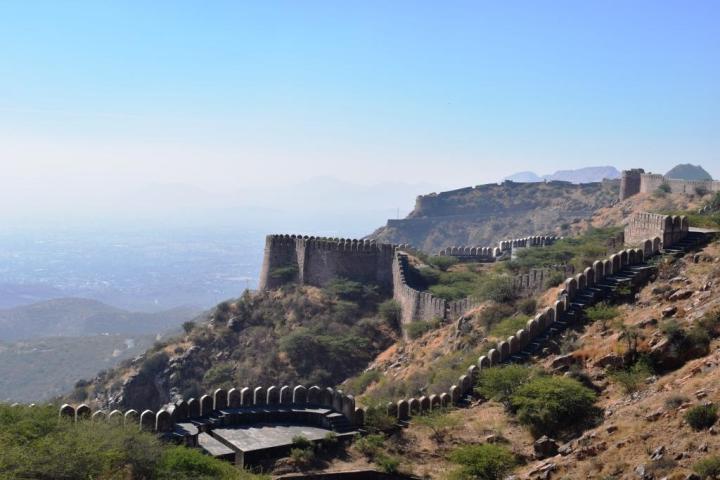
The tomb is at the foothill of the Taragarh hill. Close by is the Central Jail and a Jain temple. And atop the hill is a fort. The road to Taragarh Fort is clear. The drive up goes past the lesser visited Prithviraj Chauhan memorial park (Ticket cost: INR 20). The last Hindu king of India had a vast empire and this fort was built in 1354. Originally, the fort had three gateways, Lakshmi Pol, Phuta Darwaza, and Gagudi ki Phatak, and a massive network of tunnels. Now, only parts of the walls remain. The Mughals ruled it under Dara Shikoh from 1633–1776.
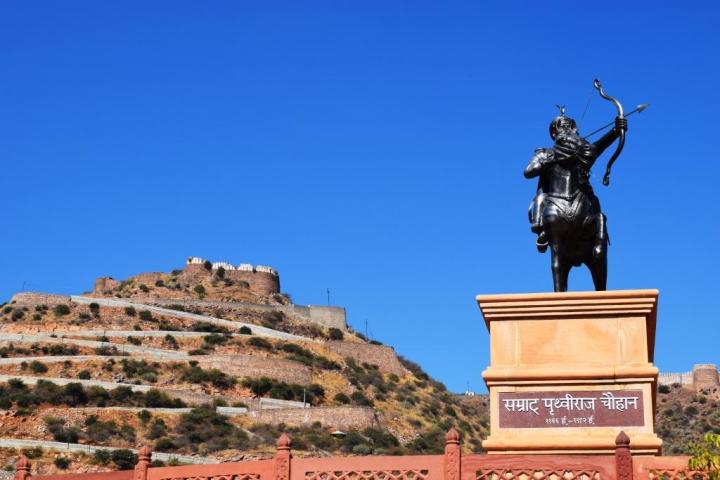
The fort has water reservoirs and the dargah of Miran Saheb. His real name was Sayyid Husain Khing Sawar or Hussein Khangsawar. He was the garrison commander (qiladar) of Taragarh Fort. Muhammad of Ghori appointed Husain as his chief tax collector. The governor had lost his life in an encounter in 1210. And was now the guiding star, residing in a sacred tomb amid the vegetation and the ruined walls, attracting hundreds daily.
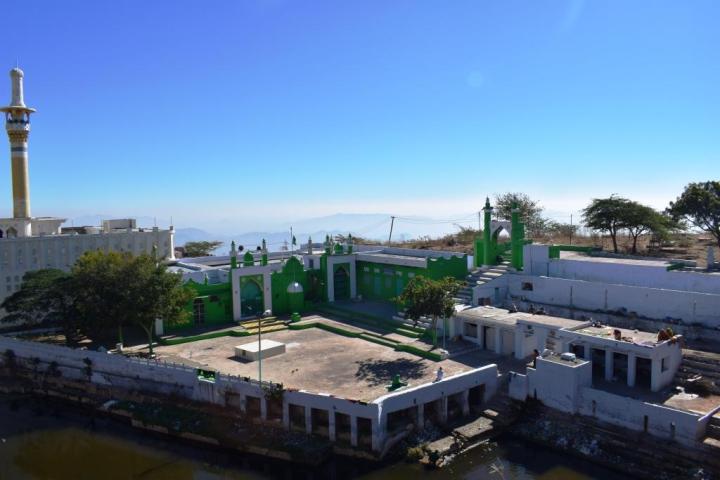
A little disappointed at not finding anything, we walked past the dargah of Miran Saheb, gazing at city below, the hills in the distant, taking back the many shades of the sacred twin towns in our cameras.
How to reach: There are many trains to Ajmer. The nearest international airport is at Jaipur which is well connected with domestic flights too. You can reach Ajmer by road or by rail. And from there, Pushkar is just a 45-minute drive.
Best time to go: September to March, as the heat in the desert can get to you.
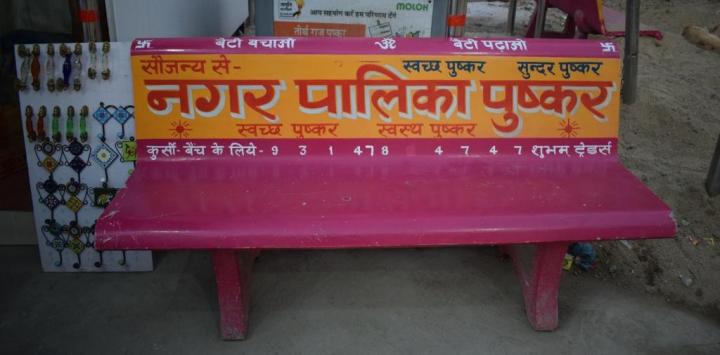
Things To Keep In Mind
1. Preferably wear cotton clothes and keep yourself covered. India is a tourist-friendly but a little conservative country, so there can be unwanted attention.
2. Carry your own water bottle, some places are not clean.
3. A bottle of sunscreen, medicines and first aid kit.
4. Keep your passport under lock and key.
5. Bargaining is a good idea in the market.
6. There are many beggars there but we prefer not to encourage them.
7. Locals ask for money if you want to take their pictures, so best to carry small currency notes. It’s better than begging.
8. When trying street food, make sure you have a strong stomach.
9. Everyone pretends to be a guide, but is not. Check credentials as the government has certified guides.
10. While offering offering prayers and paying people on the ghats might be honourable, do it only if you believe in it.

This blog post is part of #BlogchatterA2Z 2023 challenge.
Read previous posts A, B, C, D, E, F, G, H, I. J, K, L, M, N, O





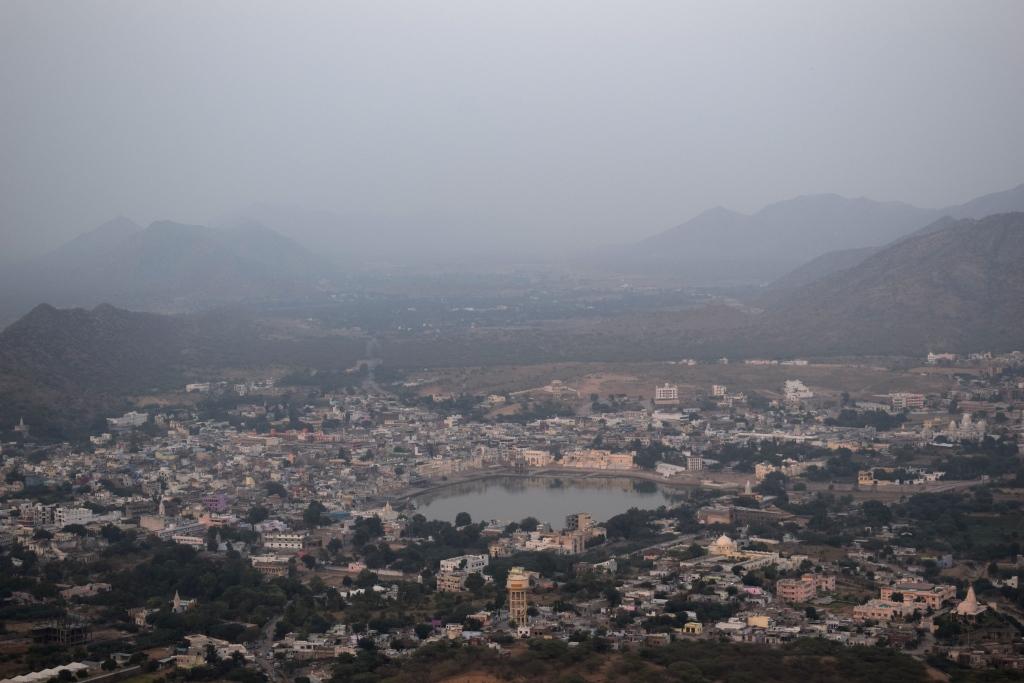
Lovely post. I almost fell for that it is ongoing and you were there.
It’s a spritual, mystic experience: Pushkar and the ponds. Thanks for sharing.
Narayan x
LikeLiked by 1 person
So happy to have created the feel🧚♂️ but November is the right time to go. The camel fair is ongoing and the weather is also good.
LikeLike
I know. But I feel the fair, all what was has lost the charm somehow that was. May be we are still early in post covid days or is it something else can’t say,
LikeLiked by 1 person
What an interesting set of experiences. I am not sure I would start with a view of the god with four heads. But I know that I would visit the market and try the sweets. I would love to see the Shiva temple but I would not be heading into the pond. But the show at twilight would draw me in. Such a great variety to see.
LikeLiked by 1 person
Yes. It’s a really small place but the colours change as the day progresses. Am sure you would like it.
LikeLike
Beautifully written post on Pushkar and Ajmer dargah Shareef. The exquisite camel rides clad in colorful robes and the Kalbeliya dance during the desert fair, and the legendary temple of lord Brahma makes Pushkar worth a visit. A dip in the pond is definitely part of the ritual. I visited Pushkar and Ajmer Shareef long back when we stayed in Rajasthan and your post brought back sweet childhood memories of the trip.
LikeLiked by 1 person
Very happy to know it brought back some good memories.
LikeLike
The camel fair intrigues me. Do they actually have camel races also?
LikeLike
Yes. There are races too
LikeLike
I have been to Pushkar twice but never had a chance to visit the fair. I would love to visit the place again as the ghats are so divine that one can enjoy a peaceful time there.
LikeLike
Now is the time. The fair is on till November 19.
LikeLike
You had me at sand dunes and camel cart rides, Pushkar sounds amazing. I believe I could easily spend an entire day wandering the open air market taking it all in. I would love to experience a traditional Kalbeliya dance. Great tip that a strong stomach is needed to try the street food
LikeLiked by 1 person
It’s a small town, but cosy ambience and slow life. A lot of fun for people who are not in a rush.
LikeLike
I would love to ride in one of this camel carts and see the camel fair in Pushkar. Very intriguing post about the tempels of Pushkar! Hopefully it is soon possible for Europeans to travel in India again.
LikeLiked by 1 person
I think It’s all opening up after November 15! And yes, Rajasthan is quite a popular state with international tourists as it’s so vibrant.
LikeLike
One of the things that fascinate me about the Hindu culture is the stories revolving on their gods and goddesses and the legends around rituals. I love how there is an explanation or a history for almost everything and anything. I’d love to witness the Kalbeliya Folk Dance one day!
LikeLiked by 1 person
Yes. Actually even the Greeks, Romans and Egyptians have so many stories woven around the gods.
LikeLike
We have been there once before. But I would not mind a visit again. Although a small place, there is so much to do especially during the Camel Fair days.
LikeLiked by 1 person
I had never heard of a camel fair before! And I’ve always wanted to visit an Indian open air market. Your 10 tips are super helpful too, so that I know what to watch out for and be prepared for when exploring.
LikeLike
This brings memories back . Thanks for sharing this post Pushkar and the ponds . Thanks Anita
LikeLiked by 1 person
It’s nice to know you have been to Pushkar.
LikeLiked by 1 person
Exhaustive. And you write charmingly well.
LikeLiked by 1 person
Thank you.
LikeLike